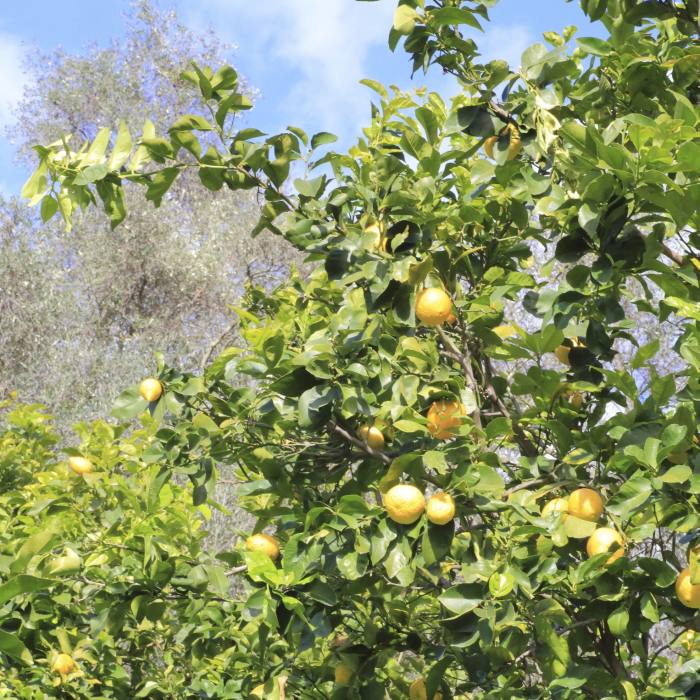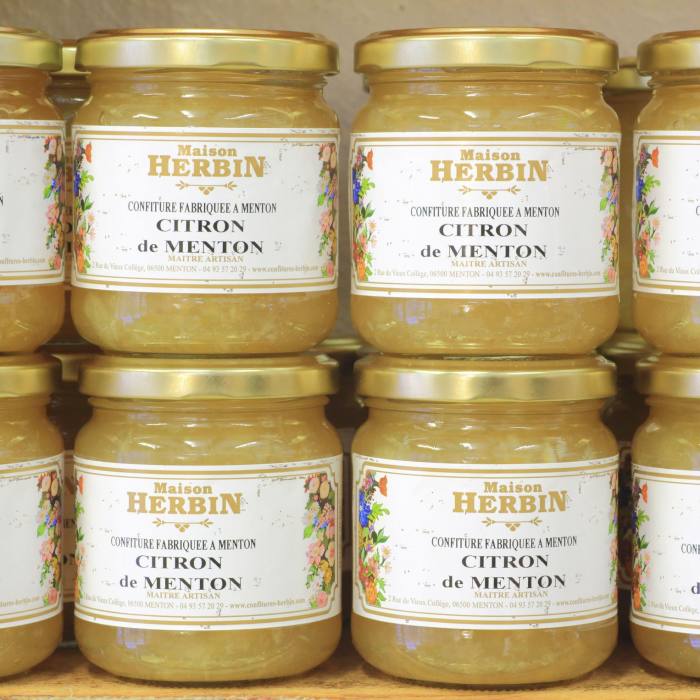A giant violin made almost entirely from oranges and lemons stands in the gardens outside Menton’s Palais de l’Europe in tribute to Mozart’s The Marriage of Figaro. Eight metres high, it incorporates 10 tons of fruit. Nearby in the Jardins Biovès, a citrus Aïda sits atop two enormous sphinxes, alongside seven other towering sculptures.
I’ve escaped the winter gloom for a weekend on the Côte d’Azur during Menton’s Fête du Citron, a celebration of all things citrus held every February. The town, sandwiched between Monaco and the Italian border, is known for its lemons, which thrive beneath steep cliffs that shelter the groves from northern winds.
Prized for their sweet flavour and edible peel, Menton’s lemons hold IGP (Protected Geographical Indication) status. They’re so precious, in fact, that the 150 tons of lemons and oranges that are used for the festival’s showpieces aren’t Menton lemons at all — they’re imported from Spain. “We don’t produce enough lemons here for all the statues and floats,” says Christophe Ghiena, technical director of the town council. “Besides, ours are better saved for eating.”
The 15-day festival takes most of the year to prepare for, with Ghiena’s team of council employees pausing their usual maintenance work to help build the enormous structures in metal scaffold and wire mesh on to which the thousands of oranges and lemons are attached. “The fruit is added just a few days before the festival starts, so they’re as fresh as possible,” says Ghiena. “But afterwards, nothing goes to waste. They’re all still edible so we sell them in three-kilo bags for €1 each; locals buy them to make jam or juice.”


As I wander between the statues on Saturday morning, a buzz is building as more visitors arrive. During the weekend, some 200,000 are expected at the groves and the open-houses of producers before filling the town centre for the Sunday afternoon carnival parade.
More orange-and-lemon statues stand on street corners and along the seafront. Even more extraordinary, though, is how ubiquitous the fruit trees are. I spy them in gardens, squares and the main shopping street, Rue Saint Michel, is lined with orange trees, their bright spheres peeping through the dark leaves. Here, between the lemon-themed gift shops is La Maison Herbin, established in 1975 and known for its top-quality jams; its workshop is open for the public to see the production in action.

Manager Maxime Lefort tells me how the original Madame Herbin had been inspired by a marmalade recipe brought by the British residents who first came to Menton in the late 19th century. In the workshop, myriad jams are made by hand in huge copper pans.
Lefort takes a lemon and shows me how it’s bigger and rounder than usual, then cuts it open for me to see the centimetre-thick peel, giving me a slice to taste. I bite into it, skin and all, expecting that familiar wince at the sourness but it doesn’t come. The flavour is indeed sweeter, fresh. “It’s gentle isn’t it?” he says.

The shop’s famous lemon conserve is therefore much less bitter than the marmalade I’m used to, with just a little zing. Beside it on the shop shelves sit jams from all the various citrus fruits grown in Menton: mandarins, yuzu, kumquats, cedrat (confusingly know as citron in English), bergamot, sweet orange, bitter orange, grapefruit and pomelo.
Along the street is the colourful market hall, which is rammed with counters selling meat, aromatic spices and cheeses. There’s also Mitron, the bakery of adopted local hero Mauro Colagreco, the Argentine chef at the helm of Menton’s three-star Michelin restaurant Le Mirazur. I buy an almond and citrus slice and devour the sticky, sweet cake from its paper wrapping, licking my fingers as I go.


In the groves behind the town, I visit La Maison du Citron, run by father and son duo Laurent and Adrien Gannac, who have cultivated a steep valley above the Garavan district. Between this plot and a few others, they have some 750 trees, of which 300 bear fruit. When Languedoc-native Laurent moved to Menton in 1988, he was shocked to find that lemon cultivation had fallen out of favour with locals who were more concerned with selling land for real estate than growing lemons.
“You could see trees laden with fruit, but people weren’t really harvesting them. There was still a kind of folklore around citrus fruits but the local economy had moved on,” he says. “Coming from outside, I saw they had something totally exceptional.”
Menton’s municipal grove, La Casetta, is only open to the public during the fête. I join a tour around the nine terraces, home to an extraordinary collection of citrus plants, from lemons to bergamots, grown here so the council always has its own supply for use in events and promotions. Gardener Hervé Inaudi explains that the 250 trees represent the wide variety of citrus fruits that grow in Menton, but they can be fickle. “You usually get around five years of fruit, but you just never know if they’ll get a disease or fungus,” he says.


Sunday is carnival day so I head to the town centre where I watch a troupe of cancan girls warming up their high kicks. Before long, the parade starts and the girls head off around the circuit, whooping as they go. Musicians pass by — there’s everything from a brass band to a traditional Peruvian group — interspersed with the floats: a native American headdress created from oranges and lemons, a giant dancer lifting her skirt behind a citrus-clad Moulin Rouge, a vast mechanical insect followed by a robotic elephant spraying water from its trunk.
For two hours, the air is filled with confetti, music and the excited cheers of the audience. The scene is pure joy — the best antidote to the February blues I could have wished for.
Details
This year’s Fête du Citron runs from February 11-26, see fete-du-citron.com. Carolyn Boyd was a guest of Atout France, Menton Tourism (menton-riviera-merveilles.co.uk), Tourisme Côte d’Azur (cotedazurfrance.fr) and The Maybourne Riviera, which has double rooms from €750 (maybourneriviera.com)
Find out about our latest stories first — follow @ftweekend on Twitter
Stay connected with us on social media platform for instant update click here to join our Twitter, & Facebook
We are now on Telegram. Click here to join our channel (@TechiUpdate) and stay updated with the latest Technology headlines.
For all the latest Travel News Click Here
